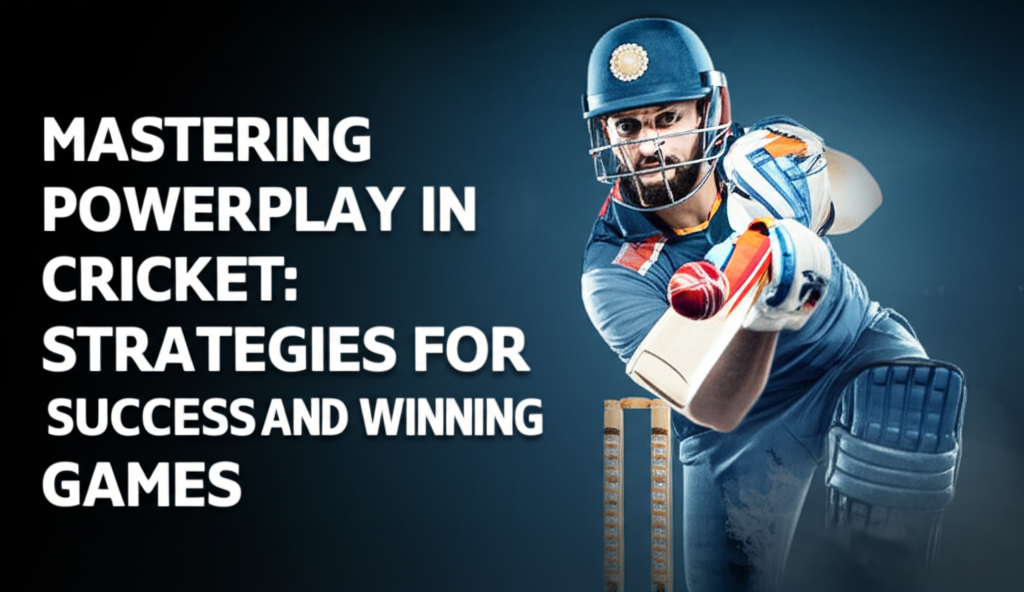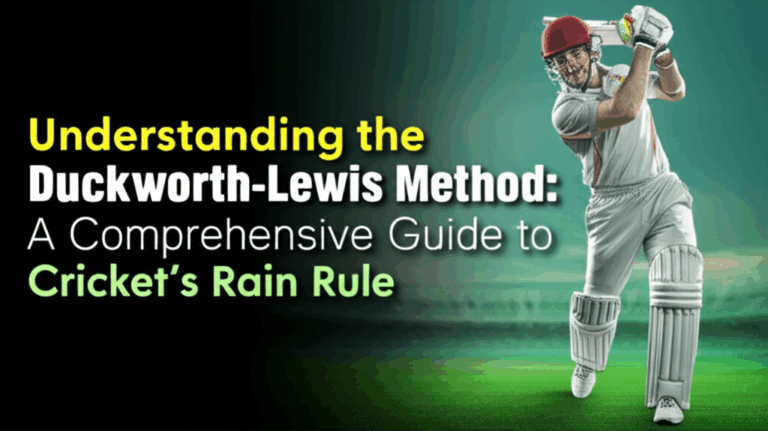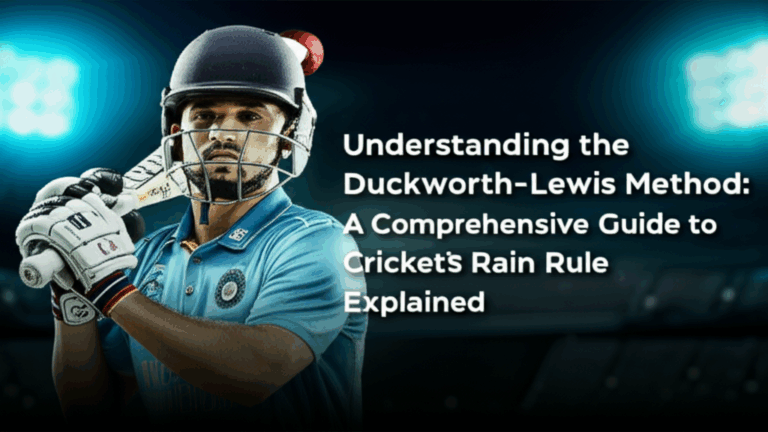
Cricket is more than just a game; it’s a strategic battle where mental acuity often trumps physical prowess. Among the many elements that make cricket exhilarating is the concept of ‘Powerplay.’ This period in limited-overs cricket is a time when the rules of the game shift dramatically, creating opportunities for aggressive batting and strategic bowling. But successfully navigating this phase requires a mastery of tactics and strategies that can mean the difference between victory and defeat. In this article, we will delve into the intricacies of mastering Powerplay in cricket, providing you with actionable strategies to enhance your game and achieve success on the field.
Have you ever watched a cricket match and noticed how the game can turn in a matter of overs? That’s the essence of Powerplay. Whether you’re a budding cricketer, a seasoned player, or an avid fan wanting to understand the game better, this guide will equip you with the knowledge to appreciate and excel during this crucial phase of play. We’ll explore the fundamentals of Powerplay, its benefits, key strategies for both batting and bowling, and practical applications that you can implement in your next game. By the end of this article, you’ll have a comprehensive understanding of Powerplay that can help your team clinch those hard-fought victories.
Understanding Powerplay in Cricket
Powerplay refers to specific overs in limited-overs cricket (both One Day Internationals and T20 matches) where fielding restrictions are applied. These restrictions are designed to encourage aggressive batting and make the game more exciting for spectators. In ODIs, the Powerplay is typically divided into three segments: the first Powerplay (overs 1-10), the second Powerplay (overs 11-40), and the third Powerplay (overs 41-50). In T20 matches, the Powerplay consists of the first six overs of the innings.
The Rules of Powerplay
During the Powerplay, the following rules apply:
- Limited Fielders Outside the Circle: In the first Powerplay, only two fielders are allowed outside the 30-yard circle. In subsequent Powerplays, the rules vary, with more fielders permitted outside the circle.
- Encouragement of Aggressive Play: The fielding restrictions aim to create scoring opportunities for the batting side, leading to more boundaries and higher scoring rates.
Understanding these rules is crucial for both batsmen and bowlers. Batsmen can capitalize on the restricted field placements to score runs, while bowlers must be tactical in their approach to minimize runs and take wickets.
Key Components of Powerplay Strategy
Mastering Powerplay involves several components, including batting strategies, bowling tactics, and understanding the match context. Let’s break these down further.
Batting Strategies During Powerplay
As a batsman, your approach during Powerplay can set the tone for the entire innings. Here are some tactics to consider:
- Positive Intent: Focus on aggressive shots and aim to score quickly. Look for gaps in the field and take calculated risks to hit boundaries.
- Rotating the Strike: While boundaries are essential, rotating the strike keeps the pressure on the bowlers. Use singles and twos to keep the scoreboard ticking.
- Targeting Specific Bowlers: Identify the weaker bowlers in the opposition and target them during the Powerplay to maximize runs.
For instance, in the 2019 Cricket World Cup, England’s openers frequently sought to exploit the first 10 overs’ fielding restrictions, leading to high-scoring starts that put pressure on their opponents.
Bowling Strategies During Powerplay
On the flip side, bowlers face a unique challenge during Powerplay. Here are some effective strategies:
- Bowling Tight Lines: Focus on maintaining a tight line and length. Aim to bowl dot balls to build pressure on the batsmen.
- Using Variations: Introduce variations like slower balls, yorkers, or bouncers to disrupt the batsman’s rhythm.
- Field Placement: Utilize aggressive field placements to create catching opportunities and limit runs.
During the 2018 IPL season, bowlers who adapted their strategies effectively during Powerplay often turned matches around, showcasing the impact of tactical bowling.
Benefits and Importance of Mastering Powerplay
Why should you focus on mastering Powerplay? The benefits extend beyond just individual performance; they can significantly impact your team’s success. Here are some key advantages:
- Setting the Tone: A strong start during Powerplay can set the momentum for the entire innings, leading to higher overall scores.
- Psychological Edge: Dominating the Powerplay can demoralize the opposition, giving your team a psychological advantage.
- Creating Opportunities: Powerplay creates scoring opportunities that can be pivotal in close matches.
Incorporating these strategies can elevate your game and contribute positively to your team’s performance, as demonstrated by numerous successful teams in international cricket.
Practical Applications of Powerplay Strategies
Now that we’ve covered the theory, let’s look at how you can practically apply these strategies in real matches. Here are some actionable steps to take:
For Batsmen
- Practice Aggressive Batting: In practice sessions, focus on playing aggressive shots and improving your boundary-hitting skills.
- Analyze Opposition: Study the opposition bowlers and their strengths and weaknesses. Prepare specific strategies to counter them.
- Maintain Fitness: Fitness plays a crucial role in running between wickets. Enhance your fitness to maximize runs through quick singles.
For Bowlers
- Work on Variations: In training, practice different deliveries like slower balls, bouncers, and yorkers to keep batsmen guessing.
- Simulate Pressure Situations: Create match scenarios during practice to develop a mental approach to bowling in Powerplay.
- Engage with Captains: Have discussions with your team captain about field placements and bowling strategies tailored for Powerplay.
By incorporating these practical steps into your training regimen, you can significantly enhance your effectiveness during Powerplay situations.
Frequently Asked Questions
What is Powerplay in cricket?
Powerplay is a period in limited-overs cricket where fielding restrictions apply, creating opportunities for aggressive batting. In ODIs, it consists of three phases, while in T20s, it lasts for the first six overs.
Why is Powerplay important?
Powerplay is crucial because it can set the tone for the innings, allowing teams to score quickly and gain momentum. A good start can lead to higher scores and can demoralize the opposition.
How should batsmen approach Powerplay?
Batsmen should aim for aggressive play, target weaker bowlers, and focus on rotating the strike. The key is to capitalize on fielding restrictions to score runs quickly.
What strategies should bowlers use during Powerplay?
Bowlers should focus on tight lines and lengths, use variations to disrupt batsmen, and employ aggressive field placements to limit scoring and create wicket-taking opportunities.
Can Powerplay strategies vary by match situation?
Absolutely! Strategies should be adapted based on the match context, opposition strengths, pitch conditions, and the current score. Flexibility is key to mastering Powerplay.
How can teams practice Powerplay strategies?
Teams can simulate Powerplay scenarios in practice matches, focusing on specific strategies like aggressive batting or tight bowling. Analyzing past matches can also offer valuable insights.
Conclusion
Mastering Powerplay in cricket is an essential skill that can lead to greater success on the field. By understanding the rules, developing effective strategies for both batting and bowling, and implementing practical applications, you can elevate your game and contribute to your team’s achievements. Remember, Powerplay is not just about the runs scored or wickets taken; it is about the mindset and tactics that shape the course of a match.
As you step onto the field for your next game, keep these strategies in mind and embrace the challenge of Powerplay. Whether you’re batting or bowling, approach this phase with confidence, and you’ll find yourself making a significant impact. Now, go out there, apply what you’ve learned, and enjoy the thrill of mastering Powerplay!




